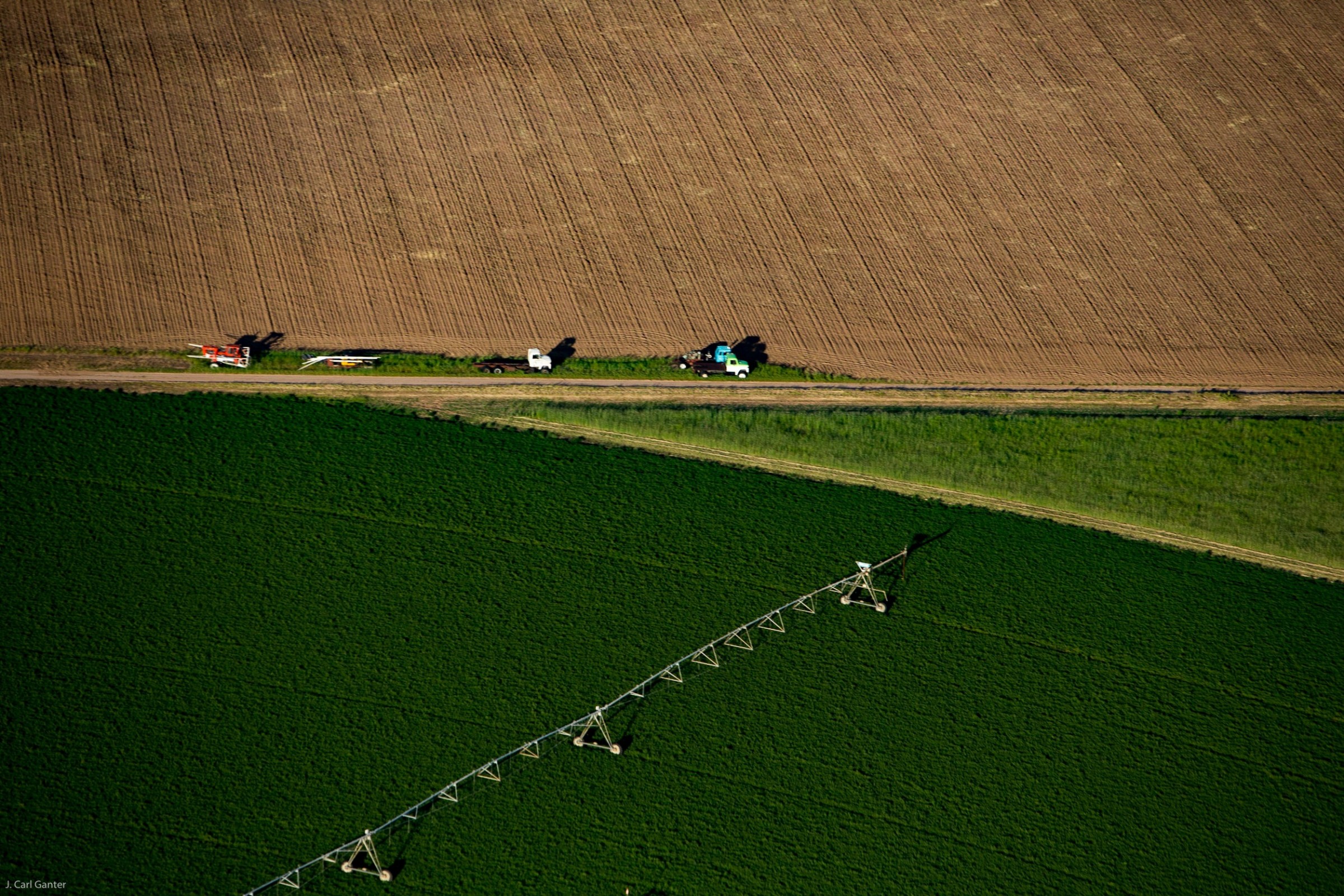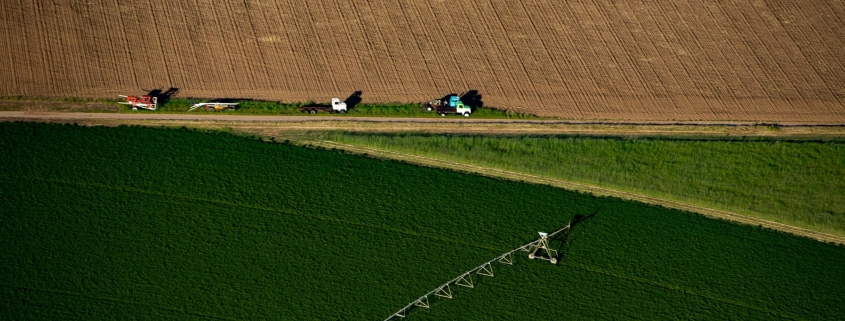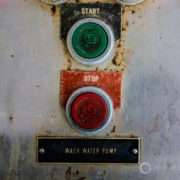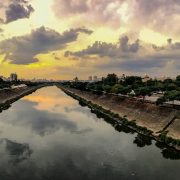U.S. Irrigation Continues Steady Eastward Expansion
Extreme weather and financial pressures nudge farmers toward providing their own rain.

A center pivot irrigation system in Weld County, Colorado. Photo © J. Carl Ganter/Circle of Blue
By Brett Walton, Circle of Blue
Irrigated farmland in the United States climbed to a record-high 58 million acres in 2017, according to new federal government data. It represents a 4 percent increase from 2012.
More striking than the increase itself, said Steve Evett, a U.S. Department of Agriculture soil scientist, is where much of that growth occurred.
Irrigation, originally the domain of arid regions west of the 100th meridian, is steadily being adopted in the humid eastern states. Farmers — and their bankers — in the Mississippi delta, Corn Belt, southern Georgia, and elsewhere view the capacity to supplement increasingly erratic rainfall with water pumped from underground or from canals as an essential feature of the 21st-century business model.
Irrigated acreage increased in every state in the Midwest and in most southern states, as well. The data were part of the USDA’s Census of Agriculture, which is published every five years. The department’s statistical service released the 2017 update on April 11.
Arkansas, Georgia, Illinois, Indiana, Iowa, Michigan, Missouri, Mississippi, and Minnesota registered significant increases in irrigated land. At the same time, the amount of farmland given supplemental water decreased in several traditional powerhouses of irrigation: California, Kansas, and Texas.
The shift in irrigation patterns “tells a story about economic pressures,” Evett told Circle of Blue. But the shift is also about changes in urban development, growing seasons, precipitation, temperature, and the competition for water. “I could also step out there and say that it tells a story about climate change,” he added.
Economic and Climate Pressures
Sixty years ago less than 7 percent of irrigated land was in the eastern states, Evett said, citing USDA numbers. (The numbers aren’t perfect, but they’re the best available, he noted.) By the late 1980s that figure had reached 20 percent. Today, eastern states account for roughly 29 percent of irrigated land.
The trend line is strikingly consistent and likely to continue for the foreseeable future, Evett said.
The decline of irrigation in the American West is part of a long-term trend that is linked to more competition for increasingly scarce water. That is due in part to demographic patterns. Urban growth has led to the conversion of cotton and alfalfa fields to subdivisions and cul-de-sacs. But it’s also a result of inadequate water. In Texas, for instance, where the Ogallala aquifer, a prime water source, is slowly being drained, irrigated acreage is down 25 percent since 1997. In California, which is in the process of putting restrictions on groundwater use, the decline is 12 percent over those two decades.
Eastern states did not initially develop the canal networks or install the center pivot sprinkler systems that made industrial farming possible and profitable farther west. Eastern farmers instead relied on rainfall to nourish their crops. But as climate change throws familiar weather patterns out of whack, eastern farmers are making new investments and opting for equipment that can deliver water even on cloudless days.
“One of the obvious things is that people irrigate to protect against the vagaries of weather,” Evett said. “Those vagaries are becoming more extreme.”
By extreme, Evett means longer gaps between rains. The rains that do fall are heavier, which soaks the soil at the outset. But the moisture does not hang around forever.
“Soils can hold only so much water,” Evett said. “If you don’t have another rain come along to moisten them, people want to irrigate.”
Changes in soil moisture are indeed forecasted for the Midwest. According to the federal government’s climate assessment that was published in November, heavier spring rains will saturate soils. But rising temperatures will reduce soil moisture to “insufficient levels” during the summer due to increased evaporation. That’s a recipe for irrigation, Evett said. The ability to provide additional moisture at pivotal stages in a plant’s growth cycle can be the break point between a profitable harvest and a failed crop.
Another ingredient in the recipe is financial. Yields are larger and more predictable with a steady supply of water. Bankers, hedging against risk, often require irrigation before lending to a farmer. They see it as insurance on their investment, said Earl Vories, a U.S. Department of Agriculture engineer who works on irrigation in Missouri.
Conflicts Arise
The irrigation expansion is not without risks. It is placing new demands on water in states that do not have a long history of negotiating conflicts between users.
In Wisconsin, increased irrigation in the Central Sands region has resulted in the shrinking of lakes and wetlands. Excess fertilizers have contributed to such an increase in nitrate pollution in the region’s sandy aquifers that Gov. Tony Evers declared 2019 the “year of clean drinking water” in the state.
In Michigan, farmers in Ottawa County, the state’s fastest-growing county and a center of high-value orchards and flower nurseries, found their groundwater increasingly salty, while shallower domestic wells began to dry up. County officials are now considering pumping restrictions and eyeing sites suitable for recharging the aquifer.
In Arkansas, which irrigates more than any eastern state, more than half of the groundwater pumped in the main rice-growing region is unsustainable. A network of canals and pipelines, hundreds of miles in length, that would divert water from the White River has been proposed as a remedy. The project is partially completed, but two decades after breaking ground, it is still hundreds of millions of dollars short of funding.
In South Carolina, large-scale groundwater withdrawals by potato farms in the Edisto River basin have been a source of conflict for several years. Only last November did state regulators say they would establish a permit system to track withdrawals.
Florida and Georgia, meanwhile, have fought in court since the late 1990s over water use in the Apalachicola-Chattahoochee-Flint basin. The Flint River watershed, in southwest Georgia, is a hotspot for irrigation.
Conflicts between users are likely to spread alongside increased irrigation, said Dustin Garrick, an associate professor at Oxford University who studies water policy.
Garrick sees two dynamics at play in the eastern United States. On one hand, states lack historical experience of dealing with shortage and resolving conflicts. For that reason, decades-long court battles can fester, like that between Florida and Georgia.
On the other hand, the absence of longstanding water rights held by farmers could make it easier to reallocate supplies without constitutional “takings” claims. In practice, though, Garrick anticipates farmers will use political pressure to defend their access to water — or extract payments for not using it. That happened in Georgia two decades ago when lawmakers passed a bill to authorize payments to farmers in the Flint River basin who do not irrigate during drought.
All of which is an argument that lawmakers should prepare for changes in water use that are driven by irrigation and are already in motion, Garrick said.
“The main no-regrets advice is to identify and strengthen forums for negotiation and conflict resolution between cities, agricultural users, and other rural users,” Garrick wrote to Circle of Blue in an email.
Not all irrigation expansions will result in competition, of course. Irrigated farmland in Missouri increased by 350,000 acres since 2012, primarily in the southeast corner of the state, an area known as the Bootheel, where farmers grow rice, cotton, and corn. No conflicts have emerged so far, according to Vories.
“The aquifer there is stable,” Vories told Circle of Blue. Farmers tap shallow layers while cities and industries drill into deeper zones, he said. “There’s no risk in the near future for water shortages there like we’re seeing in other states.”
Brett writes about agriculture, energy, infrastructure, and the politics and economics of water in the United States. He also writes the Federal Water Tap, Circle of Blue’s weekly digest of U.S. government water news. He is the winner of two Society of Environmental Journalists reporting awards, one of the top honors in American environmental journalism: first place for explanatory reporting for a series on septic system pollution in the United States(2016) and third place for beat reporting in a small market (2014). He received the Sierra Club’s Distinguished Service Award in 2018. Brett lives in Seattle, where he hikes the mountains and bakes pies. Contact Brett Walton











Leave a Reply
Want to join the discussion?Feel free to contribute!